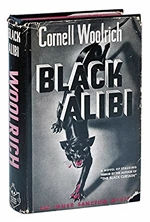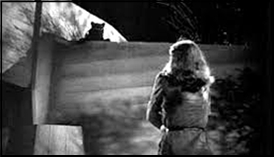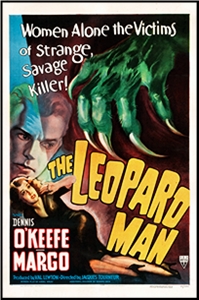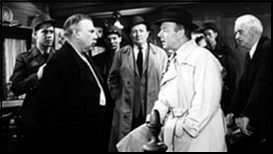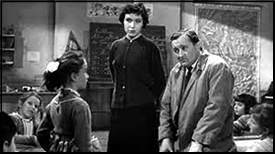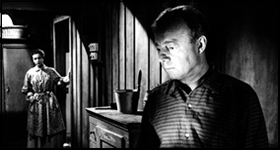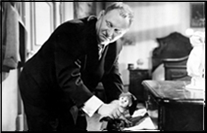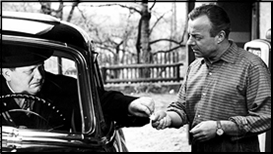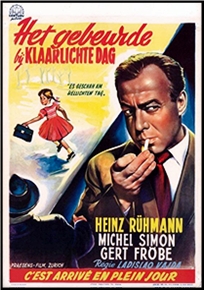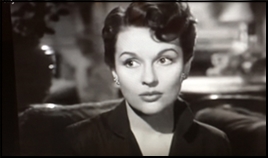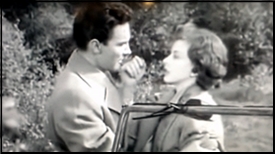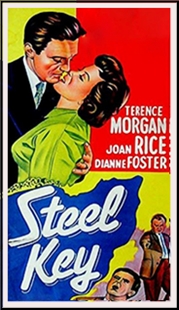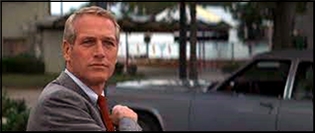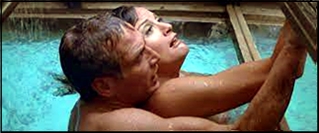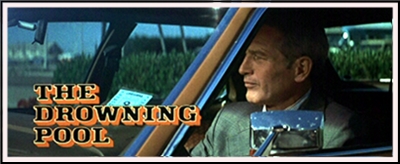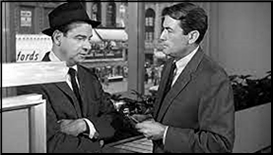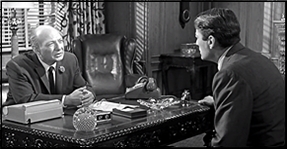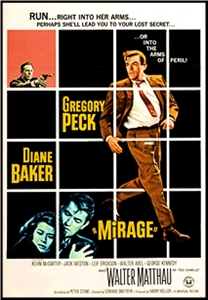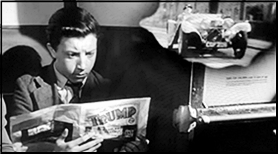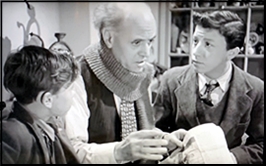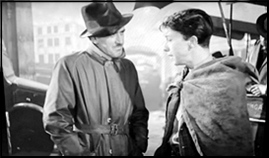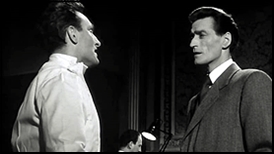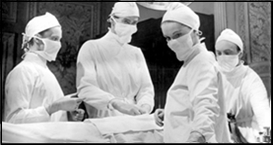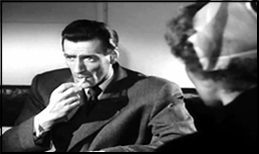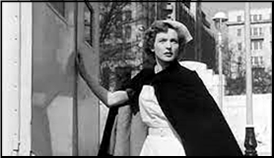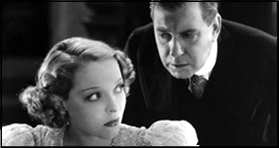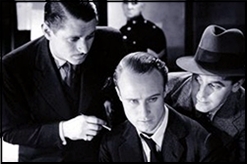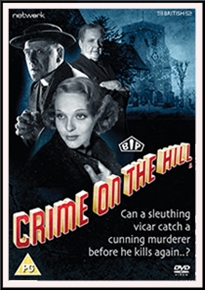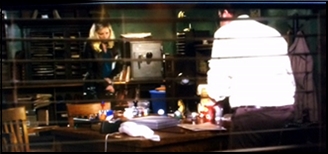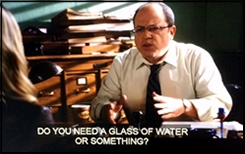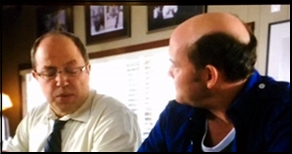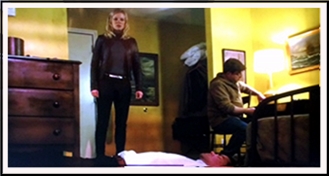REVIEWED BY DAVID VINEYARD:
LONDON BY NIGHT. MGM, 1937. George Murphy, Rita Johnson, Virginia Field, George Zucco, Montagu Love, Leo G. Carroll, Eddie Quillan, J. M. Kerrigan, Leonard Mudie. Screenplay by George Oppenheimer, based on the play by Will Scott. Directed by Wilhelm Thiele. Streaming online here.
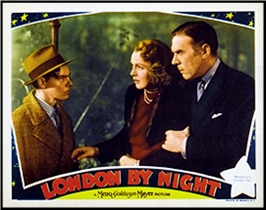
Hollywood on the Thames strikes again in this superior little mystery from MGM starring George Murphy as Irish American reporter Michael Denis who has a nose for mystery even when he is trying to get away for his holiday in Paris with his nosy dog Jones.
At his favorite pub for a last drink before leaving for his holiday, Murphy meets his friend Bill (Eddie Quillan with an Irish accent), a clerk for a local businessman, who is in love with vivacious crime obsessed barmaid Bessie (a scene-stealing Virginia Field). While Bill and Bessie sit outside and manage to drop some key exposition without doing it too obviously, they see a dark limping man with an umbrella enter Bill’s bosses business. They overhear a loud argument about money and when the Umbrella Man (as he will be branded) leaves Bill’s boss doesn’t answer from behind the locked door.
They call on Denis, and he suspects foul play and calls in his friend Inspector Jeffers (George Zucco). When they force their way in, there is no one in the office and no exit other than the one Bill and Bessie watched the owner could have left by.
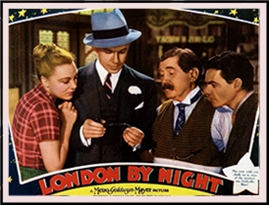
Yup, we have a genuine locked room mystery here, and it proves a pretty good one, maybe not John Dickson Carr quality, though I imagine he would have approved, particularly of one vital clue everyone misreads.
Then a policeman is fatally wounded by a man with an umbrella, and the businessman’s clothes are found in the Thames. Meanwhile a German friend of the businessman who played chess with him arrives and confirms the clothes belonged to his friend who failed to meet him that night.
They also find a threatening note written in red chalk.
Following a man he believes is the Umbrella Man, Denis intrudes on the home of Sir Arthur Herrick (Montagu Love) also on the square and meets Herrick’s beautiful daughter Patricia (Rita Johnson) butler Squires (Leonard Mudie), and nervous secretary Corey (Lep G. Carroll) and his suspicions are aroused.

There is also a suspicious character who hangs about the pub that Jones is particularly aggressive toward.
The film is set-bound and takes place on the square where the pub, the little shop, and Sir Arthur’s home are, and mostly takes place, as the title suggests, at night in the fog.
Another murder follows, as the Umbrella Man strikes again, this time at the pub, then a note, again in red chalk, arrives extorting money from Sir Arthur or Patrica will die. Denis and Jeffers set a trap for the Umbrella Man who gets away after attacking a mail man, but Denis has stumbled on a clue that explains the disappearance of the businessman from a locked room with the only door under observation and who the mysterious Umbrella Man is.
This is a fairly done mystery, though readers of this blog in particular will figure things out pretty quickly with the arrival of one performer (we can discuss him in any comments, if you want), and likely put the whole thing together, but it is a fair play mystery with clues misinterpreted and misleading, plus a seemingly mad killer who is quite mad and also much more clever than anyone thinks.
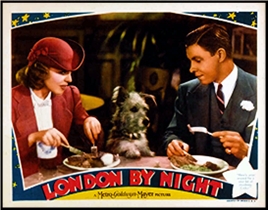
Murphy is charming as usual, and his scenes with Johnson are believable in the romantic comedy mystery genre this represents. Quillan’s accent is a bit thick, but he is earnest and plays well off Field who steals all her scenes as a genuinely sexy zany barmaid.
It’s nice to see Zucco get to play a lighter role and he does it quite well with something of the same droll humor as his Yard man in Douglas Sirk’s Lured, and the rest of the cast are all in fine form, though one is a little better and gets to stretch a bit, though I won’t give it away here by saying who.
The clues are planted fairly here, and if, as IMDb suggests the play was never produced on stage, it’s a shame. It’s a barn burner, and quite entertaining with a solid mystery element and slight romantic comedy mystery overtones.
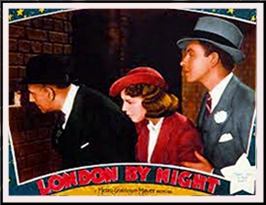
This is a pleasant mystery comedy, attractively cast, mostly fairly played, and unlike many of its kind one you would probably enjoy if you encountered it in print. It breaks no new ground, does nothing terribly original or surprising, but it is smart, playful, attractive, and enjoyable.
Extra marks too for not letting the comedy relief or the dog overwhelm the simple thrills. There are several places where it could go wrong, one where it might even seem about to, and manages to keep on track and keep focused on the goal.
I’ve seen quite a few mystery films with greater ambition that don’t hold together half as well as this does. London by Night may be a bit foggy and dangerous, but it’s a place worth visiting.
